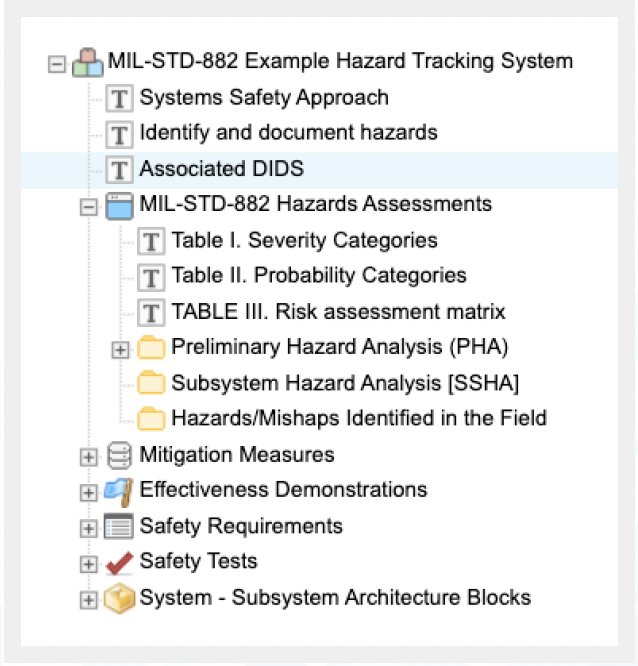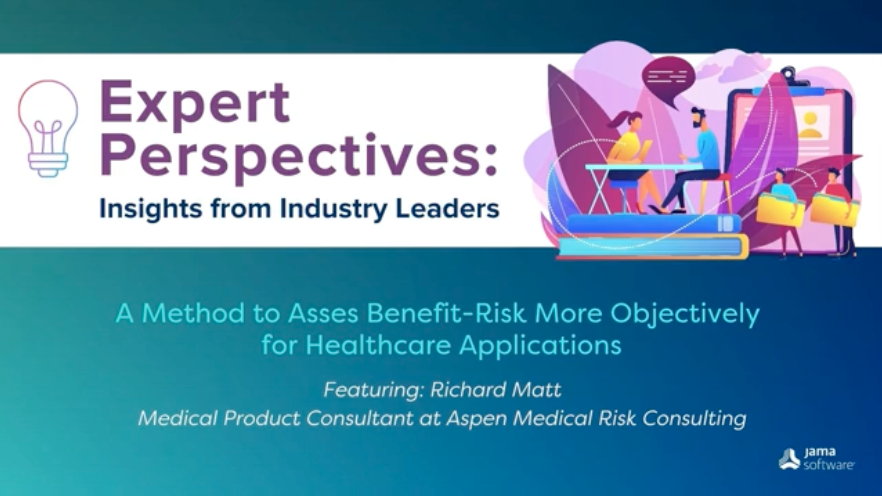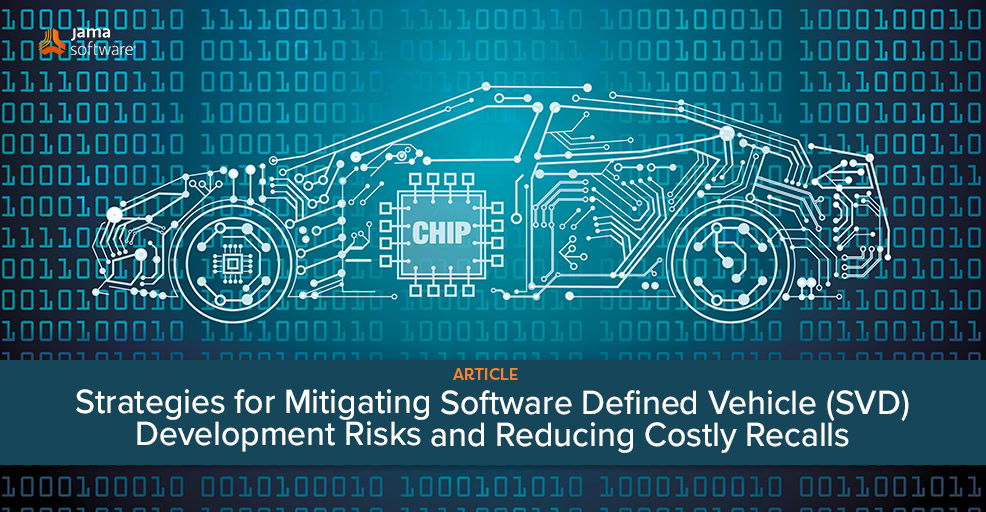2025 Expert Predictions for the Automotive Industry: AI, Sustainability, and the Road Ahead
The automotive industry is undergoing a seismic transformation, driven by advancements in AI, machine learning, electric vehicles, and sustainability initiatives.
In part two of our annual predictions series, Jama Software’s industry experts — Neil Stroud, General Manager of Automotive & Semiconductor; Stefan Stange, Managing Director; Matt Mickle, Director of Solutions and Consulting; and Ádám Gősi, Account Executive — share their insights on the most pressing challenges and groundbreaking innovations shaping the future of automotive.
From the rise of software-defined vehicles to overcoming supply chain disruptions and achieving ambitious sustainability goals, this year’s predictions offer a compelling roadmap for manufacturers looking to stay competitive and thrive in the years ahead.
We like to stay on top of trends in other industries as well. Read our predictions for Industrial & Consumer Electronics (ICE) HERE and stay tuned for future topics, including Aerospace & Defense, Medical Device & Life Sciences, Energy, and Semiconductor.
Question 1 – With the rising integration of AI, machine learning, and autonomous systems, how do you foresee these technologies reshaping automotive and semiconductor operations? What are the most promising applications and potential challenges?
Neil Stroud: The industry has undergone somewhat of a reset of expectations around autonomy. Solving the challenges related to autonomous vehicles is harder than we all thought. Generally, we are now laser-focused on the software-defined vehicle and developing the related systems that allow mass deployment of L2+ and L3 capable vehicles. This will ultimately lead into autonomy anyway.
It’s great to see robotaxi solutions gaining traction with L4 (ODD limited L5) and humans slowly becoming more open to getting in a vehicle with no driver. This is a massive mindset shift.
AI/ML has a massive role to play in all of these areas.
Stefan Stange: Development complexity and quality expectations will increase exponentially while the development time and cost must decrease, modern tools and processes supported by AI will support to solve these challenges.
Matt Mickle: With automotive, AI is exponentially increasing the development of systems that will enhance safety, enable convenience, and make maintenance more reliable. Overall, this is shifting the perspective of the driving experience entirely. This does come with concerns around risk especially in regards to cybersecurity, and with ethical decision making.
On the semiconductor side AI is helping to optimize design of chip architecture and enhance performance with AI-assisted tooling providing better analytics. Risks here are also in cybersecurity as well as supply chain risks due to things like export controls and potential tariffs.
Ádám Gősi: The challenge I think will define future development is intellectual property and how certain tools and models are handling sensitive data. Besides this, it is important to establish the responsibilities. In safety-critical development there always has to be a human expert to control the result. These factors will determine if it is worth investing in developing a new AI model or maybe adopting an existing one. Customers often don’t have their own definition of what they are expecting of an AI, they expect us to show them our best interpretation so far. This could lead to a trap of over-promising. With my limited knowledge, I see the current era as the “gold rush era” – some AI developers don’t have a clear target just hoping to hit the big prize.
Question 2 – As a follow-up question: Do you have any concerns or anticipate any negative impacts as it pertains to AI & ML?
Stroud: As someone who has worked in functional safety for almost 20 years, I’m still concerned about the industry’s ability to develop systems that have the appropriate levels of safety where AI is involved. As humans, we expect the autonomous world to be a safer world and reduce the number of accidents, injuries, and deaths on our roads. However, there are plenty of high-profile examples where we are falling short.
Stange: Safety and security are a must, not losing the data authority.
Mickle: Definitely many concerns with things like AI being used maliciously in cybersecurity attacks, Energy consumption and waste issues due to the massive amounts of computational energy needed, unpredicted failures or AI hallucinations, etc. but these need to be considered and worked through as progress is inevitable and unavoidable.
Gősi: In safety-critical development there always has to be a human expert to control the result.
RELATED: Traceable Agile™ – Speed AND Quality Are Possible for Software Factories in Safety-critical Industries
Question 3 – With the rapid progression toward electric vehicles (EVs) and autonomous driving, what technological advancements do you think will be critical to automotive innovation over the next few years, and how can manufacturers stay competitive?
Stroud: The industry has to keep investing in battery technology to increase the range capabilities of vehicles as well as extending useful battery lifetime. It will be interesting to see how well alternative fuels such as hydrogen become mainstream. I do think there will be new data that comes to light that shows that electrification isn’t necessarily the holy grail that we expect. Building batteries is taking a major toll on the planet so there may well still be a combustion engine resurgence. Also, there is a macroeconomic challenge in that 80% of the world EV batteries come from China.
There is also a significant electrical grid infrastructure challenge to solve that is hugely expensive. As the number of EV’s grows, it will be theoretically possible to intelligently use power stored in unused vehicles to supplement the grid for supply. However, the grid we have today is fundamentally unidirectional (i.e. power station to consumer). Making this bidirectional is a massive and costly challenge.
Over the coming years, there is no doubt the industry will continue to get autonomous operation to a more reliable, safe, and therefore more mass-deployable state. As a result, new car ownership and usage business models will emerge enabled by technological advancements.
Stange: Development complexity and quality expectations will increase exponentially while the development time and cost must decrease. The use of modern and forward-thinking solutions will help.. Defining and following reliable processes and partnerships enabling a collaboration network by using best-in-class solutions with full traceable Agile for the development and manufacturing process should be the goal.
Mickle: AI has been coined as the next major platform shift or technology super cycle and will be the primary change for the upcoming years until we have greater machine intelligence or perhaps “machine consciousness” or Artificial Super Intelligence where AI actually outperforms humans across the board.
Gősi: As release cycles are ever shorter, products and software have to be released before fully developed. Over-the-air updates will be an important factor. Automakers will be able to update less developed rapidly depreciating models. ADAS sensors will become more refined, but incrementally. The current hardware is capable of fully self-driving. Software and regulation/local law are the limiting factors. Battery technology could see an improvement in general with the range increasing. Western Manufacturers will have to bring down the costs and improve on software quality, like Asian EV manufacturers.
Question 4 – Sustainability is a growing focus in the automotive industry. How do you see product design, materials, and manufacturing processes evolving to meet environmental goals and what role will software play in supporting these sustainable initiatives?
Stroud: There are many aspects to this. Making vehicles even more recyclable is fundamental. This impacts not only the materials used within the vehicle but also the design and construction of the vehicle. There is always the tradeoff between the value of recycled materials versus the cost of the effort to break the old car down into distinct recycled parts.
We are already seeing huge effort being put into efficient scalability and reuse when it comes to vehicle chassis platforms and software reuse.
Finally, manufacturing has a key role to play. The continuous march towards the truly smart factory that not only allows for mass-customization but also the ability to manufacture multiple models on the same production line even to the point where a single MaaS line can produce for multiple OEMs. These megafactories will be super-efficient and because there are fewer of them, the environmental impact will be lower.
Stange: The complexity also to guarantee sustainability will increase and must be handled with a professional and scalable software and process.
Also, the market expectation in regard to design, materials, individuality and related manufacturing processes will increase and be a game changer for success.
Mickle: Systems are being designed more with an end of life in mind and with reusability and modularity as a backbone. We’ve seen this shift for many years now with SDVs and it will only grow. Data provided by AI driven software will help drive optimization in the lifespan of all areas of the development process and supply chain, enhancing efficiency to reduce waste and understand better how things can be reused.
Gősi: Sustainability goals are not supporting the real cause in my belief. If EVs are going to continue being the supported trend by governments, and therefore manufacturers, then the battery manufacturing and recycling process needs to be improved to be more sustainable.
Question 5 – As software-defined vehicles become the new standard, what shifts do you anticipate in software development and cybersecurity practices to support seamless updates, driver experience, and vehicle safety?
Stroud: Software is eating the world. The challenges faced by OEMs in the software domain is immense. The modern vehicle contains hundreds of millions of lines of code. More than a modern commercial or military aircraft. This problem is compounded as the software comes from hundreds of third-party vendors and it is the responsibility of the vehicle manufacturer to integrate and test everything for correct operation and ensure it is still safe, secure and performant. This need must drive a mindset shift in the way systems are designed as well as breaking down the barriers between the OEM’s and the suppliers. The ones that will succeed are the ones that foster seamless interfaces between organizations. This will directly impact safety and security in a positive way as well as accelerating innovation.
Stange: A car becomes more and more a computer with wheels with exponential increase of requirements regarding software, updates on weekly basis also considering cybersecurity. Manufacturers have to balance between cost and security and develop cars that allow access to like a iPhone or computer but with higher and better security and safety strategies.
That means, car software platforms have to change and improve dramatically in the next years.
Mickle: Increased automation and traceability throughout the toolchain, using AI to analyze data and improve efficiency by providing that data intelligently to influence rapid change and execution.
Gősi: On the high level over the over-the-air updates and software updates and development need to be improved at the majority of OEMs and suppliers.
RELATED: Buyer’s Guide: Selecting a Requirements Management and Traceability Solution for Automotive
Question 6 – How is the automotive industry preparing to address challenges in the supply chain, particularly with semiconductor shortages, and what strategies could help improve resilience and adaptability in the face of future disruptions?
Stroud: The recent semiconductor supply constraints were a wakeup call for the industry. Vehicle shipments were being held up because of the lack of availability of the smallest sub-$1 components. As a result, I see two behaviours emerging. Some OEM’s are naturally building strategic partnerships with the semiconductor suppliers and trying to contractually guarantee supply. This gets interesting as the majority of semiconductor companies are ‘fabless’ and rely on companies such as TSMC, Global Foundries and SMIC. The other strategy is to take matters into your own hands and develop your own chips (ASIC) that provide exactly the functions that are needed versus the inevitable compromise that often happens with an off-the-shelf standard product. Companies like JLR are starting down this path. However, it’s not for the faint-hearted. Chip design is not easy and it’s expensive especially if you want to gain the benefits of the latest bleeding edge process nodes. Also, you will still be dependent on the same fab companies that serve the rest of the industry.
Stange: I see OEM collaborating more and more with start up´s in the semiconductor or EV market to assimilate the needed know how, strategies and flexibility reacting fast to the market needs. So, for example VW collaborates with Rivian and announced using their Software platform for the next Audi´s and VW´s and Aston Martin is collaborating with Lucid.
Mickle: Investment in local suppliers as well as diversifying the regions from which supplies are acquired. Also designing for flexibility and modularity such as with chiplets.
Gősi: Shortages don’t seem to be a problem nowadays. The supply chain needs to be more agile and detect risks sooner to avoid the delays caused by the JIT method.
Question 7 – The concept of “mobility as a service” is gaining traction in urban areas. How do you think automotive companies should adapt to this trend, and what new types of partnerships or innovations do you foresee in this area?
Stroud: MaaS will ultimately drive massive change in the way the mobility of the population happens. We already see that the current generation generally has a dramatically different view on driving and vehicle ownership. We’ve already witnessed the disruption that rideshare created. The car OEMs will have to adapt and develop new business models that go beyond the traditional purchase and lease models of today. There will be intermediary companies that emerge (that could be subsidiaries) that provide such services. I also envisage tighter integrations with the insurance companies as the volume of individual vehicle data that’s available will allow for hyper-tailoring of such services.
Stange: From my perspective, we have started mobility as a service already in urban areas with apps like FreeNow or Uber and more will come. Important is, that everything somehow has to be networked with the support of intelligent systems and software.
Also, the infrastructure, for example, intelligent charging points, parking, and availability has to improve. The way of thinking about mobility as a service has already changed for the younger generation, while my older son still likes cars for fun and as a status is my younger son just considering how to get from A to B fast, cheap, and safe.
Gősi: This is a business question between OEMs and local governments. From a product perspective, they would need cheap-to-produce and cheap-to-maintain and easy to drive vehicles that can serve those users. Manufacturers will have to further optimize their platform strategy for this specific application.
Question 8 – Are there any additional insights you have regarding predictions, events, or trends you anticipate happening in 2025 and beyond?
Stroud: I strongly believe that it is not the technology that will limit the deployment of these new technologies but the legislation. Every single country has a different set of rules and that will have a significant impact. We also have to overcome the challenges of dealing with ethical AI. Autonomous crash scenarios will have to be ‘calculated’ differently depending upon geographic location. Naturally, this is a highly sensitive topic but one that must be solved.
Stange: 2025 will be a challenging year for Automotive specially and Europe, unclear EV strategies, Asian competition, high taxes, energy and labor costs, and political struggles – everything will push the auto industry to slimline their way of thinking, developing, and manufacturing. On the other side, there will be a lot of opportunities for the innovators, the startups, and the companies, that reinvent themselves and restructure in a healthy way, these are the ones, we are happy to support.
Gősi: Unless there is a major shift in strategy and execution, the traditional European OEMs will lose their market-leading position. Innovative US and innovative and competitive Asian manufacturers will take over the leading position.
Editor’s Note: Responses reflect a mix of British and American English, depending on the respondent.




 By leveraging Jama Connect, DoD systems development teams can significantly improve their efficiency, reduce risk, enhance safety, and expedite development while maintaining the highest standards of regulatory compliance with MIL-STD- 882E, contract requirements, defense data standards, interface standards, design criteria standards, manufacturing process standards, standard practices, and test method standards.
By leveraging Jama Connect, DoD systems development teams can significantly improve their efficiency, reduce risk, enhance safety, and expedite development while maintaining the highest standards of regulatory compliance with MIL-STD- 882E, contract requirements, defense data standards, interface standards, design criteria standards, manufacturing process standards, standard practices, and test method standards.![[Webinar Recap] Key Systems Engineering Skills: Critical Thinking and Problem Framing [Webinar Recap] Key Systems Engineering Skills: Critical Thinking and Problem Framing](https://www.jamasoftware.com/media/2024/03/Key-Systems-Engineering-Skills-Critical-Thinking-and-Problem-Framing.png)




